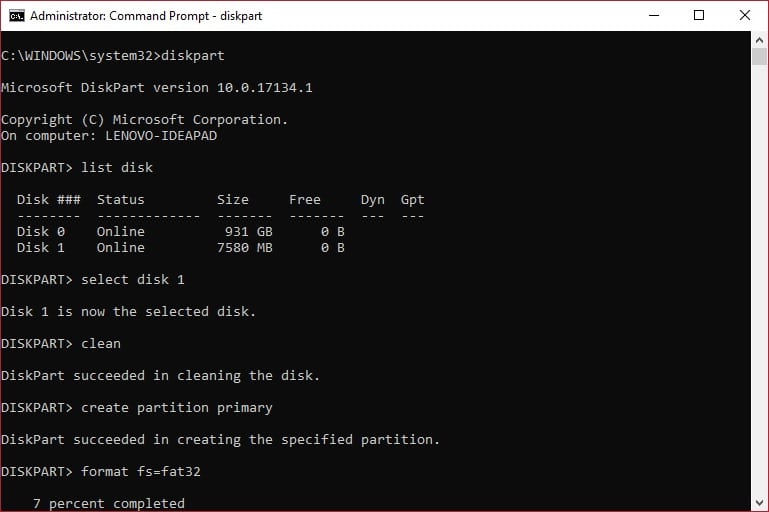If you’ve been a Windows user, you’d know how to format USB Drives on Windows. It’s fairly straightforward as you have to right-click a drive and select the Format option. You select a new file system for the drive before you click the Start button and that’s it. Sometimes though, this method can return an error. In most cases, the error message you’re shown is Windows was unable to complete the format. Usually, when a GUI method fails, there’s a command line method to do the same thing which probably won’t fail. So if you’re facing such errors while trying to format a USB drive on Windows 10 you can try the command prompt.
Most Windows users will probably shy away from the command line because it seems daunting. You don’t know what to type, and even when you do know you can’t make sense of it. Using the command line seems like a job only programmers and computer wizards would do. However, using the command line is simpler than using the GUI.
Note: Formatting a USB Drive will erase all data on it. If you have any important data saved to the drive, copy or move it to a safe place. Furthermore, a formatting error can occur due to several reasons. In some cases, using the command line can help but it may not help in every situation.
You may like: Relocate Installed Apps and Games in Windows 10
Formatting the USB Drive using the Command Prompt
- Run the Command prompt as administrator. To do this, search cmd in the Windows 10 search box, right-click the Command Prompt search result, and select Run as administrator. Alternatively, right-click the Start button or press Win+X on the keyboard. Select Command Prompt (Admin) from the quick menu. Click Yes on the User Account Control screen.

- In the command prompt, run the Diskpart tool by entering this command:
Diskpart
- After this, retrieve a list of all connected drives using the command below.
List disk
When you press Enter, the DiskPart tool will list all the drives connected to your PC. Identify the USB drive that you want to format and make sure it is the correct drive. Your internal drives are also listed here and you wouldn’t want to format those. You can see the sizes of the listed drives to help make your decision. If you’re still unsure, disconnect the USB drive and run the list disk command again. Comparing the list of drives before and after disconnecting the drive you can easily identify it.

- When you’ve identified the USB drive, note its disk number and then run this command.
Select disk X
Here, X is the number of the drive you want to format. For instance,
Select disk 1
- That command only selects the drive, as you probably guessed. To erase it all you have to do is type this command,
clean
and hit Enter.
- This deletes the entire partition though so you will need to create a new one and you can do this with the following command.
Create partition primary
The above command will create a primary partition but you can also swap it for a logical partition.
- Next, you should assign a file system to the drive.
Format fs=FAT32 Quick
The above command will format the USB drive in the FAT32 format which is ideal for USB drives. You can use fs=NTFS instead to format the drive as NTFS which will only work on a Windows PC.

-
Assign
You’ve successfully formatted the drive, So type exit, hit enter to close Diskpart, and then close the Command prompt window.
Recommended reading: How to Change System Fonts on Windows 10
